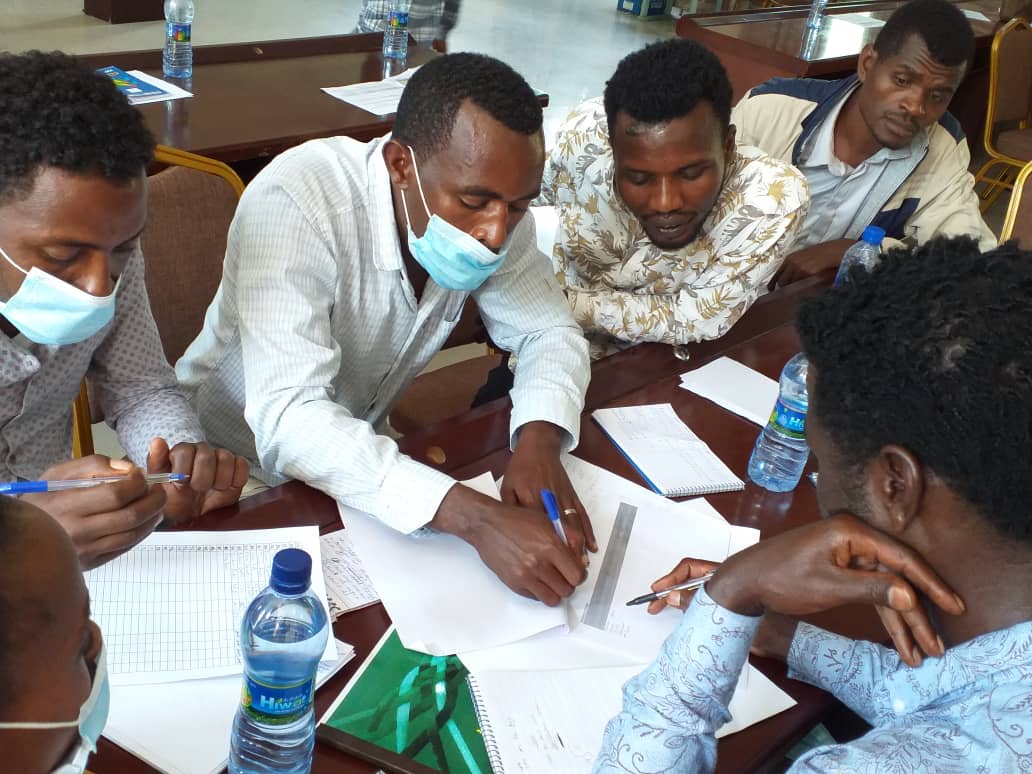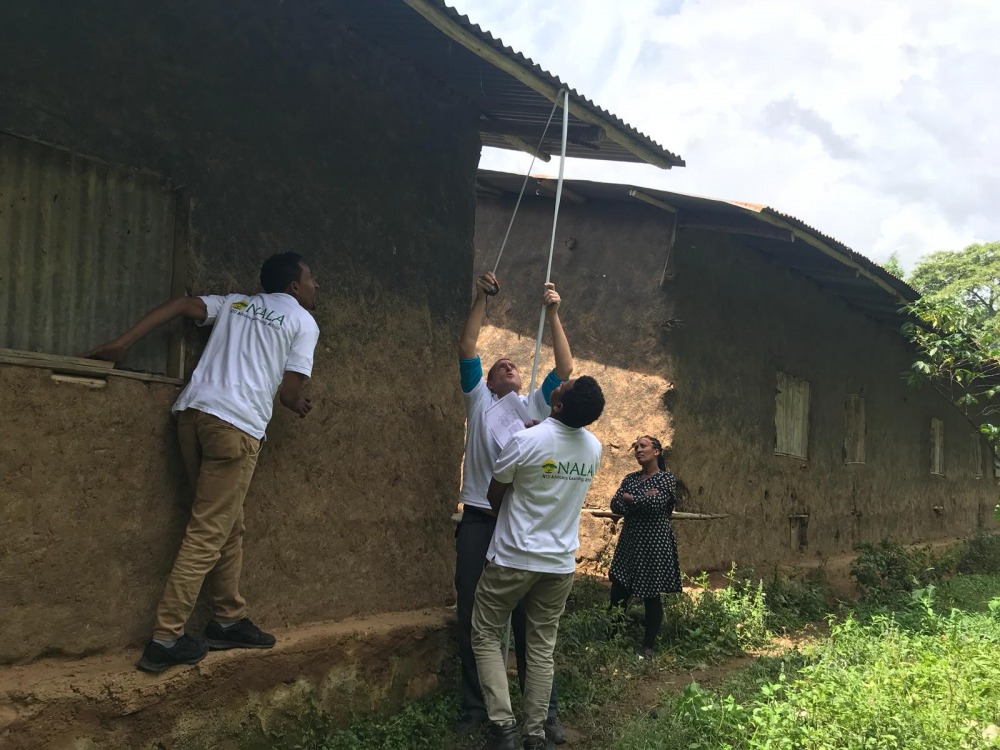
Neglected Tropical Diseases (NTDs), concentrated in the most marginalized groups in society, are both a cause and a consequence of poverty and social inequality. Elimination of NTDs requires a multipronged approach, including treating the disease, education for disease prevention, community mobilization to ensure a safe environment for children and community members, and policies that solidify and maintain success. NALA, founded by Prof. Zvi Bentwich, is pioneering together with the Ethiopian Government, a strategy to control NTDs in Ethiopia through the development of an inter-sectoral coordination framework bringing together different sectors to collaborate in jointly planning to implement and monitoring strategies for disease prevention. The framework has proven so effective that it was adopted in some locations as a response to the Coronavirus pandemic

“So far sectors were working separately and only looking through the narrow lens of their field, but now we have all come together and have a more holistic view of the community’s needs. Therefore, we are better able to improve people's living conditions and their overall wellbeing.” Semein Kubela, Wadla District Health Office Head, Ethiopia
Early 2020 would not, for many of us, be the preferred point in time to return to. Covid-19 was spreading, vaccination was not yet in place, and governments were scrambling to find ways of slowing the spread of the virus and keeping the mortality rates as low as possible. The pandemic created a complex global public health crisis, presenting clinical, organizational, and system-wide challenges. Yet, these challenges do not only exist in relation to tackling emerging health crises, such as a global pandemic. To some extent, it might be easier to respond to epidemics, with public attention and resources clearly directed to the acute situation. The challenge mounts when chronic conditions affect rural communities, those without access to knowledge or resources. Such is the case with neglected tropical diseases.
Neglected Tropical Diseases (NTDs), such as Bilharzia (schistosomiasis), intestinal parasites, and Trachoma, often affect the poorest and most marginalized groups. They are a cause and consequence of poverty, social inequality, and lack of access to basic services. Such diseases, which flourish in the absence of clean water and an adequate sanitation infrastructure, mainly affect children and women. In 2013, the World Health Organization’s (WHO) General Assembly adopted a resolution calling on actors to expand and implement interventions against NTDs, and for international partners—including international organizations, financing bodies, academic institutions, civil society, and the private sector—to support and harmonize those efforts.
One of the earliest actors to advocate for the elimination of neglected tropical diseases was an NGO named NALA—NTD Advocacy, Learning, and Action. NALA was established by Prof. Zvi Bentwich, an Israeli physician and immunologist, and was founded based on his ground-breaking research on HIV patients co-infected with NTDs. Prof. Bentwich hypothesized that controlling and eradicating NTDs would be an effective way of improving public health, as this would strengthen the immune system of vulnerable populations and drastically reduce the impact of the main public health threats in Africa—HIV, malaria, and tuberculosis. Since 2006, NALA has been advocating for the elimination of neglected tropical diseases, partnering with Ethiopian stakeholders to study and develop diverse models for the control and prevention of NTDs. Elimination of NTDs requires a multipronged approach, including treating the disease (in some of the communities, approximately 90% of all school children suffer from NTDs), education for disease prevention, community mobilization to ensure a safe environment for children and community members, and policies that solidify and maintain success.
The joint work on the common challenges created the understanding that the sectors could rely on each other’s expertise, and that with joint planning and allocation of resources, they can help each other reach their goals
The role of NGOs in international development has been debated for decades. Generally, they aim to bridge the gap between citizens’ needs and existing services. Where states cannot provide adequate goods or services, or where groups are excluded from access to state institutions, alternative channels of service provision should be found. The challenge is that the stronger and more effective the NGO is, the harder it is for local leadership and ownership to develop. There is therefore the need to transition the role of NGOs from “development as delivery of services to development for leverage”. NALA pushes the envelope, working with communities and policymakers to create disruptive ways for disease prevention. Disruptive in the sense of seeking solutions that can drastically change basic living conditions and prevent the spread of NTDs. These solutions are conceived, initiated, and nurtured through constant interaction between community leaders, local government, the NALA team, and subject matter experts; challenges arise, opportunities are explored, and products are designed. NALA plays a significant role in field-testing the different solutions; if found to be effective, NALA then advocates with public health actors to adopt and tailor the modality, making it an international standard of operation.
A good example of the process described above is the development of an inter-sectoral coordination framework for disease prevention in Ethiopia. In 2016, the Ethiopian Federal Ministry of Health decided, in its 5-year strategic plan, to launch a holistic approach to eliminating NTDs. The Ministry of Health asked for NALA’s support in the creation of a national policy framework bringing together different sectors to collaborate, ensuring that the policy would be implemented across all sectors, starting from the community level and all the way to the federal level. NALA was chosen because of the success of its community-level interventions bringing together all relevant community actors, and because of its innovative and exploratory process of defining requirements and solutions.
The beginning of the project involved an iterative consultative process to find the basis for cross-sectoral collaborations. The first step was a set of interviews conducted with various partners. The interviews focused on several topics, such as how the partner defined and measured success, the challenges they faced, and the opportunities or incentives they might pursue in collaborating with different sectors.
The interviews were successful in identifying a common challenge across all sectors—the most effective ways for influencing behavioral change and creating new hygiene habits. The Water Sanitation and Hygiene (WASH) sector for instance, had problems with promoting the use of water and sanitation infrastructure, such as persuading households to fetch water for bathing from a newly built hand pump instead of bathing in the river. Public health and education professionals engaged with the same behavior from different angles and had trouble with effective messaging in the community and in schools. This was therefore identified as a good initial platform for bringing partners together. The joint work on the common challenges created the understanding that the sectors could rely on each other’s expertise, and that with joint planning and allocation of resources, they can help each other reach their goals. The next challenge was to advocate for collaborative work among all relevant decision-makers, and to create the right platforms for the different sectors to jointly map needs, plan interventions—and, of course, measure their success.

Some main takeaways from the consultative process are:
-
For successfully developing a sustainable solution, there must be an identified local actor that would be fully invested in the process and own it. In our case, this was the Ethiopian Federal Ministry of Health.
-
An iterative consultative process ensures that solutions are tailored to the specific requirements of implementing partners. It also serves to create a “buy in” with all relevant stakeholders.
-
Advocacy should target both the decision-makers and technical experts of the relevant stakeholders.
-
Defining a joint vision that echoes the aims of all partners, helping to bring partners together.
-
Creating clear joint indicators for measuring success, taking into account the way each sector measures its success. The Ethiopian Federal Ministry of Health continues to work on creating clear indicators and tools for ensuring that data is made available, and can be visualized and analyzed easily.
The first phase of our work culminated, in 2019, in a national framework to guide integrated programs published by the Ethiopian Federal Ministry of Health, and a district-level coordination toolkit. The toolkit was tested in more than 100 districts and was found so effective that districts also used it to respond to the Covid-19 threat. The Ethiopian Federal Ministry of Health is now in the process of scaling it up nationally, with the support of online certificate training.
Michal Brook
Michal is the CEO of NALA, an international NGO that aims to eliminate neglected tropical diseases. Michal worked in the United Nations World Food Program, managed several programs and non-profits, and consults with various international organizations. She holds an international organizations MBA from the University of Geneva, and a Bachelor of Laws from the Hebrew University.


